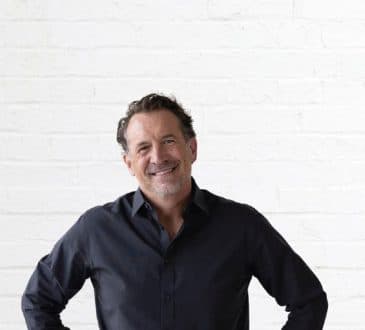Reflecting on non-profit management and racial equity

The non-profit sector in the United States generates over $3.7 trillion in annual revenue, employing 12.5 million people in 1.8 million organizations according to Candid. The non-profit sector also has a set of unique structures and business models – particularly considering factors such as legislation and tax benefits that may vary depending on the focus of the organization, the scope, and the breadth of its mandate.
Adding to this complexity is the challenge of diversity, equity, and inclusion. A report revealed several patterns in non-profit funding that may influence funding and the very existence of these organizations; in 2017, a report revealed that “less than 1% of the $67 billion that foundations contributed went to organizations that specifically target minority women and girls”. A Candid diversity report also said that the bigger the philanthropy is, the more likely it is to be run by a White man. This has led to questions about whether there are enough diverse groups in higher management positions in the sector.
Leonardo Civinelli is an expert on equity. He worked at the United Nations and got his degrees from top schools like University College London and Harvard University. He is dedicated to helping groups that have been disadvantaged for a long time move up in society and make it easier for them to get into the workforce. He understands systemic interventions that can yield positive outcomes. In this interview, he reflects on his experience and offers suggestions to non-profit managers navigating the challenging landscape of racial equity.
CEOWORLD magazine: What do you believe is missing in terms of racial equity within the non-profit sector?
Leonardo: There are several components to consider. First, we must examine diversity, equity, and inclusion within organizations. Are diverse groups represented across various layers of the organization? How do organizations perceive and value diversity? What structures are in place to promote it? Additionally, we need to address the broader sector mandate. Studies reveal significant variations in available funding based on the issues each organization tackles.
Fundraising often dominates the workload for non-profits, leading to resource competition and a focus on donor interests that can cloud decision-making. Furthermore, we must evaluate how non-profits engage with the system to promote racial equity. What are the outcomes of these interventions? How are they creating meaningful change? Longitudinal assessments and sustained efforts are crucial for driving lasting impact. Unfortunately, many organizations fall short in this regard, sometimes for the lack the resources to showcase their value, or the failure to sustain longer-term interventions in the pursuit of short-term projects that may be more popular amongst donors.
CEOWORLD magazine: Is there any topic that is often overlooked when it comes to racial equity?
Leonardo: I will add a bit of my personal history to answer to this question because it relates to my experience as a Black man. When I was young, I was adopted by an upper-middle class White family in Brazil. That led me to a situation in which I had to constantly live in a multi-racial household, confronting the complexity of having had different experiences than my parents or many of my relatives growing up. And I think there relies on a constantly overlooked factor that prevents racial equity from advancing interracial dialogue.
Any broader fight for equity will involve systemic changes to confront the historical disadvantages collectively reinforced and perpetuated. Advancing these agendas will require negotiation within power structures; bills, legislation, and court cases are some of the usual technical fixes associated with advancing rights. Nonetheless, the technical elements are insufficient to alter the roots of the issue. Because of my upbringing, I understood racial struggles from a different lens.
To summarily attribute malice to certain behaviors and dictate the actions people ought to have in organizations based on certain characteristics is counterproductive as an equity tool and generates unnecessary animosity between different ethnic groups. And, as the evidence suggests, most of the decision-maker seats are occupied by people from a different ethnic group than the one that most racial activists. Interracial dialogue is an essential part of the process of promoting equity, and organizations should hold more space for these conversations to occur.
CEOWORLD magazine: How do you envision that transformation in practice?
Leonardo: Every organization has a threshold of tolerance for difficult conversations. However, this limit is expandable; it is like going to the gym and growing your muscles. A difficult conversation we have today should be less difficult next week, until a moment when our team is able to sustain this conversation effortlessly. A metaphor is when you start a new relationship with someone and starts trusting more the other person.
It may require you to make concessions at first, but if you create strong foundations, you may be able to advance more in the realm of complex conversations. You can start by asking questions from your employees, understanding where everyone is at, and then slowly crafting spaces where they can exchange views and ideas about topics you want to move forward.
This is one of the ideas I learned at Harvard. It is called a holding environment. It is part of the adaptive leadership framework that professor Ron Heifetz created over 40 years ago. The vision for these conversations, though, ought to be contemplating a more diverse workplace, its benefits, and what it may entail from the individuals that take part in these organizations.
CEOWORLD magazine: How does this idea of holding environments impact the senior leadership of non-profit organizations?
Leonardo: In various ways! Perhaps the most evident is staff retention and morale of individuals coming from historically underrepresented backgrounds. The inability of organizations to create environments that can satisfactorily sustain minorities has been an object of research for a long time, and it is evident that unspoken norms and corporate cultures have a role to play in this conversation.
For these organizations, the lack of dialogue might also represent a threat to their very existence as fundraising and financial decision-making can be influenced by your ability to build bridges with other ethnic groups. Another element to think about is that of the services you offer and the actions you attempt to accomplish based on your mandate: if you instigate animosity in certain communities because of your approach or your message, how may that impact your ability to expand your portfolio?
At some point, you might need to make amends with groups; for example, there may be a need for engaging with other types of inequities, like gender or socioeconomic disparities, to create coalitions and alliances that can benefit your organization.
And the holding environments need to sustain these disagreements; you will disappoint people with certain decisions and yet you will need to sustain a solid direction for your organization. Holding environments will be crucial to reduce frictions and losses as you attempt to advance new paradigms and alter your organizational culture to build a more inclusive workplace.
Source:
US Nonprofit Sector (keitercpa.com)
Philanthropic drive to aid Black women is gaining momentum | AP News
The larger the nonprofit, the more likely it is run by a white man, says new Candid diversity report | AP News
Have you read?
World’s Best Countries For Retirement.
World’s Best Countries For Women.
World’s Best Countries To Visit In Your Lifetime.
US States With the Largest Gender Pay Gaps.
CEOs who have secured the most funding during their tenure in companies in each US state.
Bring the best of the CEOWORLD magazine's global journalism to audiences in the United States and around the world. - Add CEOWORLD magazine to your Google News feed.
Follow CEOWORLD magazine headlines on: Google News, LinkedIn, Twitter, and Facebook.
Copyright 2025 The CEOWORLD magazine. All rights reserved. This material (and any extract from it) must not be copied, redistributed or placed on any website, without CEOWORLD magazine' prior written consent. For media queries, please contact: info@ceoworld.biz








